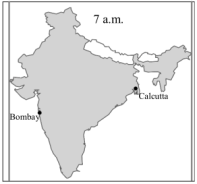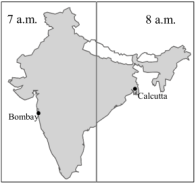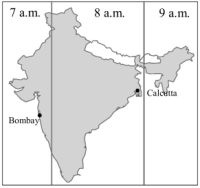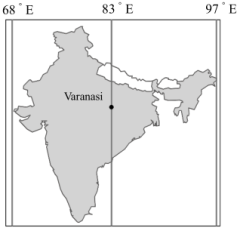The Paris climate agreement finalised in December last year heralded a new era for climate action. For the first time, the world’s nations agreed to keep global warming well below 2°C.
This is vital for climate-vulnerable nations. Fewer than 4% of countries are responsible for more than half of the world’s greenhouse gas emissions. In a study published in Nature Scientific Reports, we reveal just how deep this injustice runs.
Developed nations such as Australia, the United States, Canada, and European countries are essentially climate “free-riders”: causing the majority of the problems through high greenhouse gas emissions, while incurring few of the costs such as climate change’s impact on food and water. In other words, a few countries are benefiting enormously from the consumption of fossil fuels, while at the same time contributing disproportionately to the global burden of climate change.
On the flip side, there are many “forced riders”, who are suffering from the climate change impacts despite having scarcely contributed to the problem. Many of the world’s most climate vulnerable countries, the majority of which are African or small island states, produce a very small quantity of emissions. This is much like a non-smoker getting cancer from second-hand smoke, while the heavy smoker is fortunate enough to smoke in good health.
The Paris agreement has been widely welcomed as a positive step forward in addressing climate change for all, although the details on addressing “climate justice” can be best described as sketchy.
The goal of keeping global temperature rise “well below” 2℃ is praiseworthy but the emissions-reduction pledges submitted by countries leading up to the Paris talks are very unlikely to deliver on this.
More than $100 billion in funding has been put on the table for supporting developing nations to reduce emissions. However, the agreement specifies that there is no formal distinction between developed and developing nations in their responsibility to cut emissions, effectively ignoring historical emissions. There is also very little detail on who will provide the funds or, importantly, who is responsible for their provision. Securing these funds, and establishing who is responsible for raising them will also be vital for the future of climate-vulnerable countries.
The most climate-vulnerable countries in the world have contributed very little to creating the global disease from which they now suffer the most. There must urgently be a meaningful mobilisation of the policies outlined in the agreement if we are to achieve national emissions reductions while helping the most vulnerable countries adapt to climate change.
And it is clearly up to the current generation of leaders from high-emitting nations to decide whether they want to be remembered as climate change tyrants or pioneers.
1. The author is critical of the Paris climate agreement because ________.| A.it is unfair to those climate-vulnerable nations |
| B.it aims to keep temperature rise below 2℃ only |
| C.it is beneficial to only fewer than 4% of countries |
| D.it burdens developed countries with the sole responsibility |
| A.They needn’t worry about the food and water they consume. |
| B.They are better able to cope with the global climate change. |
| C.They hardly pay anything for the problems they have caused. |
| D.They are free from the greenhouse affects affecting “forced riders”. |
| A.They have little responsibility for public health problems. |
| B.They are vulnerable to unhealthy environmental conditions. |
| C.They have to bear consequences they are not responsible for. |
| D.They are unaware of the potential risks they are confronting. |
| A.Encouraging high-emitting nations to take the initiative. |
| B.Calling on all the nations concerned to make joint efforts. |
| C.Pushing the current world leaders to come to a consensus. |
| D.Putting in effect the policies in the agreement at once. |
相似题推荐
More affordable electricity would transform Africa.
It's no surprise that economies around the world need electricity for economic growth and job creation — not just for keeping the lights on. But Liberia, a West African nation of 4 million people, has installed electricity of just 126 megawatts.
Liberia is not alone. In fact, systemic power problems are chronic across Africa: Nearly every economy on the continent is constrained by energy gaps and high costs.
Africa's power future has largely been framed around access. People who rely on wood or kerosene for lighting and heat all deserve to have electricity at home, whether it is delivered through the national grid or by new off-grid home systems. But power for lighting and basic appliances is not enough.
That's why all countries need energy for growth. In addition to access, availability is necessary. If Africa's economies are going to create jobs for the 12 million young people who enter the job market every year. The majority of the world's electricity is used, not in homes, but on farms, in factories, mines and office buildings.
Affordability is a third big issue.
If the aim of Africans is, like everyone else on the planet, to permanently escape poverty and achieve prosperity, then every country needs energy for growth.
| A.It's simply unjust that the world's poorest people pay the most for electricity. |
| B.Africa has a large quantity of renewable energy sources, including geothermal, solar and wind. |
| C.Data from the World Bank show clearly that power is a leading barrier to firm productivity and job creation. |
| D.Energy policy must include smart choices that meet a country's environmental, social and economic goals. |
| E.That's less for the whole country than the average capacity of just one of the more than 8,000 power plants in the United States. |
| F.Ghana, Egypt, Senegal, and others already have high access rates, but still suffer from inadequate power that drives poverty and high unemployment. |
【推荐2】“Give us back our stolen hour!” Britons demanded as they objected to the introduction of Daylight Saving Time(DST) in 1916. The idea of setting the clocks to move an hour of daylight from the morning to the evening during summer has been controversial throughout its history. People have argued that the practice saves energy, reduces crime, and prevents traffic accidents. Others are not so convinced, and studies conducted over the past decade have shown mixed results.
The idea was first put into operation in Germany during World War I(19141918) in an attempt to reduce coal supply during wartime. Britain soon followed with its own Summer Time but so did confusion and chaos, with some institutions following the changes and some simply ignoring them. One writer felt angry at the laws in a more poetic manner, expressing his dislike for being forced to favor the sun over the moon.
Despite the early controversy, 82 countries currently use DST. The United States moves its clocks forward an hour at 2 a.m. on the second Sunday in March and back an hour on the first Sunday in November. Some states, however, still do not apply DST, and in the past even some areas within individual states refused to observe DST while the rest of the state did.
It was originally thought that DST would reduce energy consumption as people would use less electric lighting in the evening due to the increased hours of daylight. However, recent studies have suggested that this benefit has been canceled out by the increased use of home air conditioners, which people use for longer on long summer evenings.
Brighter evenings have reduced the number of traffic accidents in countries which observe DST, but studies have also noticed a spike(剧增) in the number of accidents during the week after the clocks change, possibly due to the sudden interruption of people's sleeping patterns.
One certain good thing to come out of DST, however, happened in 1999, when a group of West Bank terrorists(on DST) delivered bombs to a cell in Israel(not on DST) but ignored the time difference when setting the timers for their bombs. The bombs went off one hour earlier than planned, killing three terrorists instead of the intended civilians.
1. Which of the following statements about DST is TRUE?| A.It was introduced from Germany to Britain after World War I. |
| B.It can help save energy and reduce traffic accidents. |
| C.It forces people to appreciate the sun more than the moon. |
| D.It probably affects people's sleeping patterns. |
| A.7:00 am | B.7:00 pm |
| C.8:00 pm | D.9:00 pm |
| A.an advertisement | B.an annual report |
| C.an informative essay | D.a persuasive writing |
【推荐3】For decades, India’s time zone has been a hotly debated issue. Back in 1884 when time zones were officially established, two time zones were used — Bombay Time and Calcutta Time. Indian Standard Time (IST) was introduced in 1906, but Calcutta Time and Bombay Time continued to be maintained after
India’s independence in 1947, until 1948 and 1955 respectively. The current single time zone, though a legacy of British rule, is often viewed as a symbol of unity. Yet, not everyone thinks it is a good idea. India stretches 3,000 km from east to west, spanning roughly 30 degrees longitude. This corresponds to a two-hour difference in mean solar time, based on the position of the sun in the sky. Thus, the sun rises nearly two hours earlier in the east than in India’s far west. In Northeastern states, sunrise can be as early as 4 a.m. in summer and sunset by 4 p.m. in winter, much earlier than the official working hours. This results in great loss of daylight hours and more consumption of electricity, and often reduced productivity.
Meanwhile, recent studies point out that the current system leads to a serious problem in education for some students. Nationwide, the school day starts at roughly the same time; thus, children go to bed later and have reduced sleep in west India, where the sun sets later. Such sunset-induced sleep deprivation is more pronounced among the poor, mostly due to their noisy environment and lack of sleep-inducing facilities like window shades or indoor beds. On average, an hour’s delay in sunset time reduces children’s sleep by 30 minutes, and an hour’s delay in annual average sunset time reduces education by about 0.8 years. As a result, children living in locations with later sunsets are less likely to complete primary and middle school education.
Despite various requests and proposals for multiple time zones, the government is keen to retain the current system. Reasons provided include prevention of confusion and safety issues regarding railway and flight operations.
1. Which of the following illustrates the Indian time zone system since 1955?A. | B. |
C. | D. |
| A.Noisy. | B.Distant. | C.Flexible. | D.Outstanding. |
| A.The number of traffic accidents can be reduced. |
| B.Children may have better-quality sleep and education. |
| C.India may have more energy resources to generate electricity. |
| D.The country may rid itself of the impact of British colonization. |

| A.7 p.m. | B.6 p.m. | C.5 p.m. | D.4 p.m. |
【推荐1】As Shanghai prepared to introduce mandatory(强制的) garbage sorting on July 1, games and toys that examined fun ways to spread information about the garbage sorting were to encourage younger people to take action.
A 15-second video of a game went on Chinese social media. In the video, players wearing VR(虚拟) headsets saw four different types of trash can in front of them, and had to throw different types of garbage into the right buckets(桶) to get points. Although it was not the only VR game in the place, visitors lined up around the booth to explore it because of the garbage-sorting theme.
“As a Shanghai, I am in great need of this game. Maybe I won’t need to check how to categorize(分类) each piece of garbage on my phone while going through all my garbage every day if I play this game more often, ” said ZhouZhou, a young Shanghai. But some social media users in Shanghai have complained about the difficulty of sorting different types of garbage.
Wu Xia, founder and CEO of VitrellaCore, the company that created the game, said the idea was to provide an interesting way of learning about garbage sorting. “It’s simple and easy to understand. People can practice sorting garbage without actually going through their trash, and it is a more effective method than using paper materials when training volunteers,” Wu said.
1. What is the purpose of the VR game?| A.Just for fun. |
| B.Teach students to sort garbage. |
| C.Do exercise. |
| D.Keep fit. |
| A.It is too hard to sort garbage. |
| B.There are too many people lining up. |
| C.The VR game should be more interesting. |
| D.There are more ways to use paper materials. |
| A.successful | B.interesting | C.traditional | D.disappointing |
| A.Young people like VR games more. |
| B.Shanghai performs mandatory garbage sorting. |
| C.Games were used to help young people sort garbage. |
| D.Learning by playing VR games is practical for the young. |
【推荐2】Hundreds of scientists, writers and academics sounded a warning to humanity in an open letter published last December: Policymakers and the rest of us must engage openly with the risk of global collapse. Researchers in many areas have projected the widespread collapse as “a credible scenario(情景) this century”.
A survey of scientists found that extreme weather events, food insecurity, and freshwater shortages might create global collapse. Of course, if you are a non-human species, collapse is well underway.
The call for public engagement with the unthinkable is especially germane in this moment of still-uncontrolled pandemic and economic crises in the world's most technologically advanced nations. Not very long ago, it was also unthinkable that a virus would shut down nations and that safety nets would be proven so disastrously lacking in flexibility.
The international scholars’ warning letter doesn't say exactly what collapse will look like or when it might happen. Collapseology, the study of collapse, is more concerned with identifying trends and with them the dangers of everyday civilization. Among the signatories(签署者) of the warning was Bob Johnson, the originator of the “ecological footprint” concept, which measures the total amount of environmental input needed to maintain a given lifestyle. With the current footprint of humanity, “it seems that global collapse is certain to happen in some form, possibly within a decade, certainly within this century,” Johnson said in an email.
“Only if we discuss the consequences of our biophysical limits,” the December warning letter says, “can we have the hope to reduce their speed, severity and harm”. And yet messengers of the coming disturbance are likely to be ignored. We all want to hope things will turn out fine. As a poet wrote,
Man is a victim of dope(麻醉品)
In the incurable form of hope.
The hundreds of scholars who signed the letter are intent(执着) on quieting hope that ignores preparedness. “Let's look directly into the issue of collapse,” they say, “and deal with the terrible possibilities of what we see there to make the best of a troubling future.”
1. What does the underlined word “germane” in Paragraph 3 probably mean?| A.Scientific. | B.Credible. |
| C.Original. | D.Relevant. |
| A.worried | B.puzzled |
| C.surprised | D.scared |
| A.The signatories may change the biophysical limits. |
| B.The author agrees with the message of the poem. |
| C.The issue of collapse is being prioritized. |
| D.The global collapse is well underway. |
【推荐3】A project in Gambia is empowering women and reducing dangerous waste at the same time.
The Waste Innovation Center, funded by the European Union’s Global Climate Change Alliance,shows women in the Brikama area how to recycle waste into useful materials and products, which they can then sell in local markets.
Wood-like waste is recycled into charcoal (木炭),for example,which can be used to supersede firewood and reduce the number of trees that are cut down for firewood. Food waste is recycled into compost(混合肥料)to function as environmentally friendly fertilizers and plastic is turned into many useful things.
Supported by WasteAid UK and the Gambia Women’s Initiative (GWI), among others, the project provides women with skills they can use to become self-sufficient (自给自足的). Women learning at the center come from five communities, and some of them travel as far as 12 miles to learn these important skills that will provide them with an income, according to The Guardian.
Isatou Ceesay, who now leads the GWI,highlighted the need to focus on economic equality in her country, telling The Guardian, “In terms of education, women are the ones who are always behind. Boys are chosen to go to school. When we conduct our training, we find women can do a lot,but don’t know who they are, or how to implement (实施)things. ”
According to the World Health Organization’s Country Cooperation Strategy 2008—2013 report, the main environmental issue facing Gambia is poor waste management in urban areas.
Ndey Sireng Bakurin, executive director of the National Environment Agency, has voiced concern over health and environmental risks, such as water pollution, the increase of insects as well as flooding that occur as a result of poor waste management.
1. What does the Waste Innovation Center try to do?| A.Develop local markets in Brikama. |
| B.Teach women how to invent new things. |
| C.Keep women away from dangerous waste. |
| D.Help women in Brikama benefit from waste. |
| A.Replace. | B.Transform. |
| C.Burn. | D.Reserve. |
| A.don’t learn new things fast |
| B.aren’t interested in education |
| C.really hope for economic equality |
| D.are not fairly treated in the country |
| A.To summarize the previous paragraphs. |
| B.To provide some advice for the readers. |
| C.To add some background information. |
| D.To introduce a new topic for discussion. |



